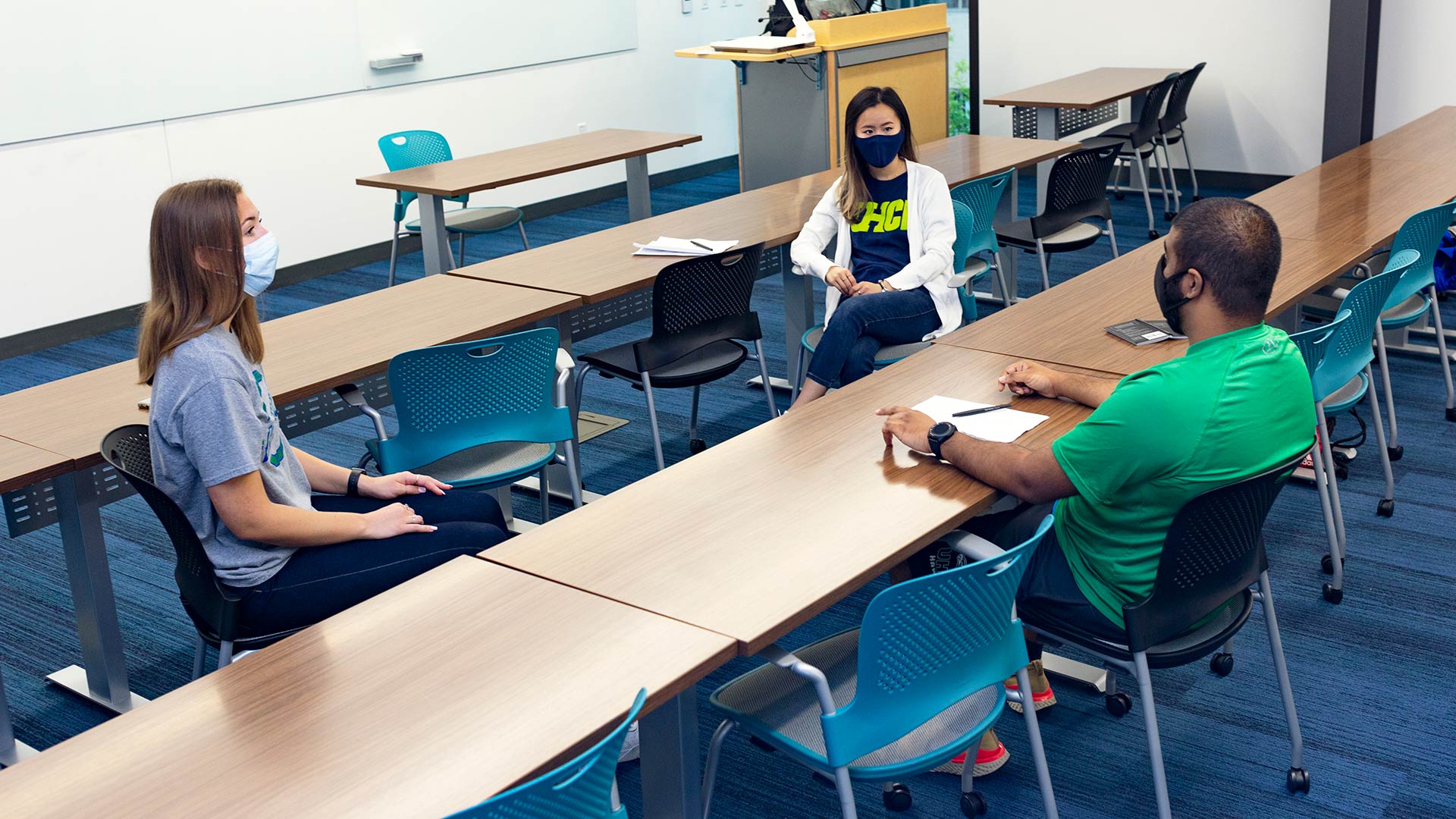- Future Students
- How to Apply
- Visit UHCL
- Admitted Students
- Tuition, Costs and Aid
- Degrees and Programs
- Contact Admissions
- Current Students
- Class Schedule
- Academic Calendar
- Advising
- Events
- Library
- Academic Resources and Support
- Student Services and Resources
- Alumni
- Lifetime Membership
- Alumni Events
- Update Your information
- Awards and Recognitions
- Give to UHCL
UHCL dean explores 'masked manners' in thought piece to air on NPR
October 23, 2020 | UHCL Staff

Nearly everyone can agree, constantly wearing masks to protect against the COVID-19 virus has been a struggle. It goes beyond just the fact that keeping a piece of cloth over our mouths and noses is inconvenient and cumbersome. It's because humans tend to process faces as a whole rather than focusing on individual features, which is why wearing a mask may impede more elements of communication than people assume.
That, says University of Houston-Clear Lake's Interim Dean of the College of Human Sciences and Humanities Samuel Gladden, is the reason why he wrote a thought piece entitled, "Masked Manners: Pandemic Politeness and the New Normal of Non-Expression," to be featured on NPR's Academic Minute on Friday, Oct. 23.
"I wanted to write about what it means to be masked in public all the time and how it has changed our lives and the ways in which we conduct ourselves in the public sphere," Gladden said. "I have felt as though I was hiding. I have found it difficult to maintain eye contact, which is easily misinterpreted by the other person. Most facial expression is in the lower half of the fact, and if you can't read the whole face, you're not reading the eyes. I felt like people thought I was glaring at them rather than simply looking."
Human beings are highly attuned to reading facial expressions. Learning to read emotions from the face helps social interaction and can reduce misunderstandings. "Wearing masks changes how we communicate nonverbally," he said. "It affects how we receive communication because we can't 'read' the entire 'text' of the face from behind the mask. There is so much conveyed from the nose down. Even just a subtle lip twitch communicates so much."
In his short discussion, Gladden explores what he characterizes as "the new normal" arising from the onset of the pandemic. "I have observed two extremes of behavior," he said. "People avoid eye contact and hurry through an activity to get it over with, or people try to engage in ways that are extremely polite. In order to keep the six feet of distance, people will acknowledge someone else in the grocery aisle, and then move to the other aisle. It's a new form of politeness to see someone, acknowledge them and then move away."
The difficulty is determining how the other person is receiving you. "Do they think you're looking at them, or do they think you're glaring?" he said. "They can't read your face, but you can't read theirs either…and with COVID-19, everyone everywhere is imagined to pose a threat."
Gladden said the virus will lead us to develop new modes of self-expression and new forms of etiquette. "I call this 'pandemic politeness,' or the 'manners of the mask.' In these alien days of relative isolation, we have good reason to innovate avenues for communication, and develop opportunities for connection," he said. "As the pandemic changes forever what it means to be human, pandemic politeness might expose masked manners as the most revealing manners of all."
Listen to Dr. Gladden's nearly two-minute presentation online.






